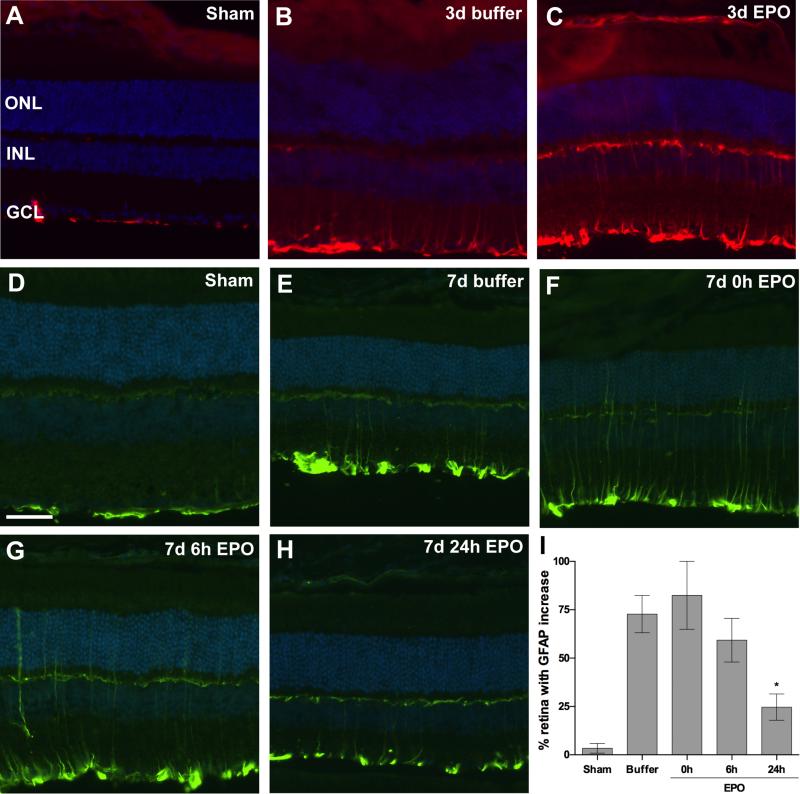Figure 4.
Treatment with EPO beginning at 24h post-blast decreases glial reactivity at 7, but not 3, days post-blast. (A-C) Representative fluorescence micrographs of GFAP immunolabeling in retinas from sham blast mice (A), or 3 day post-blast mice injected with buffer (B) or EPO (C). GFAP (red), DAPI (blue). (D-H) Representative fluorescence micrographs of GFAP immunolabeling in retinas from sham blast mice (D), or 7 day post-blast mice injected with: E) buffer or (F-H) EPO beginning at 0hr (F), 6h (G), or 24h (H) after blast. GFAP (green), DAPI (blue). Scale bar in D represents 50μm and applies to all images. (I) Bar graph of the percent of retina containing GFAP-positive Müller cell processes. Mice treated with EPO beginning at 24h post-blast had a significantly smaller amount of retina containing reactive Muller cells as compared to the buffer injected blast-exposed mice, *p<0.05.

